With its distinctive design and cutting-edge technology for its era, the Saab 35 Draken made a significant impact on aviation history. It was celebrated for its exceptional performance and stood as a symbol of Swedish engineering excellence. The aircraft served for many decades before its retirement, leaving a lasting legacy in the realm of military aviation.
Notably, the Draken holds the distinction of being the first Western European combat aircraft with genuine supersonic capabilities to enter active service and the initial fully supersonic aircraft to be deployed in Western Europe. Furthermore, it played a pioneering role as the first Saab fighter to be exported in considerable quantities.
“Saab 35 Draken was the first aircraft that combined low-speed and short take-off and landing ability with Mach 2 performance,” as stated by Per Pellesberg, Saab test pilot.
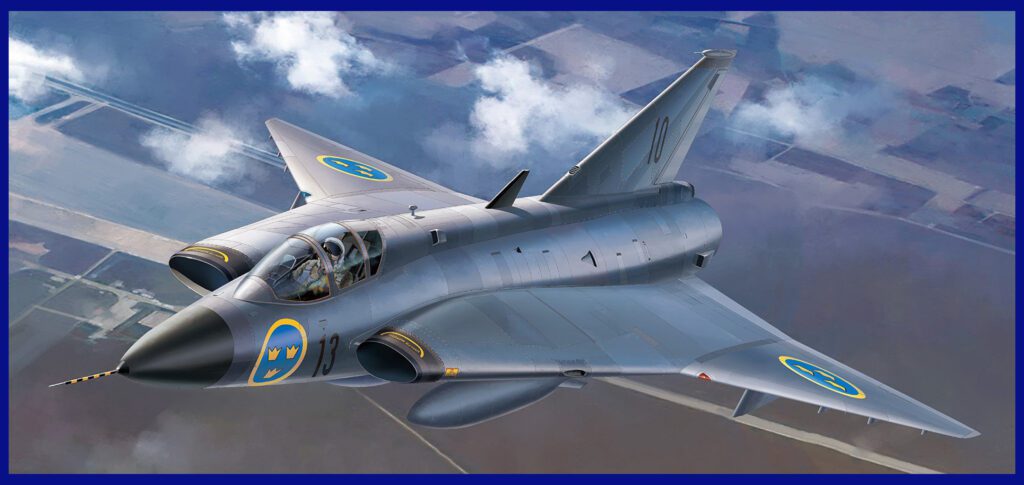
Design and Development of the Saab Draken
The SAAB company created and produced this Swedish fighter interceptor between 1955 and 1974. The development of the Draken began in 1948 as a replacement for the Swedish Air Force’s Saab 29 Tunnan day fighter and Saab 32B Lansen night fighter, both of which were also in development at the time. It featured a novel but untested double-delta wing, which led to the development of a sub-scale test aircraft, the Saab 210, built and flown to evaluate this unique aerodynamic feature. On March 8th, 1960, the full-scale production variant of the Draken was introduced into service with the Swedish Air Force’s frontline squadrons.

The Saab 35 Draken is a fighter jet recognized for its distinctive dual delta wing design. The utilization of a ‘blended wing-body concept, later known as such, has led Flight International to note the challenge of distinguishing between the fuselage and the wing. The fuselage takes on a circular form, and the inboard wing section features a large chord surface that extends almost to the engine intakes. The absence of a tailplane results in a straightforward and streamlined overall design. To enhance high-speed performance, the inner wing’s leading edge is swept back at an 80-degree angle, while the outer wing’s leading edge is swept back at a 60-degree angle.

It marked the inaugural deployment of a fully supersonic aircraft in Western Europe and represented the first combat aircraft in Western Europe designed with genuine supersonic capabilities to be introduced into active service.
It is the first known aircraft to do the Cobra manoeuvre thanks to its unusual double delta wing configuration. In fact, the cobra manoeuvre was first found and developed by the Swedish Air Force. On January 14, 1960, it became one of the first Western European-built aircraft to exceed Mach 2 while flying level.

Its propulsion was supplied by a single Svenska Flygmotor RM6B/C turbojet engine, which was a licensed version of the Rolls-Royce Avon 200/300 engine. An emergency ram turbine was positioned under the aircraft’s nose for backup power, and the engine also incorporated a built-in emergency starter unit. To shorten its landing distance when necessary, the Draken was equipped with a drogue parachute.
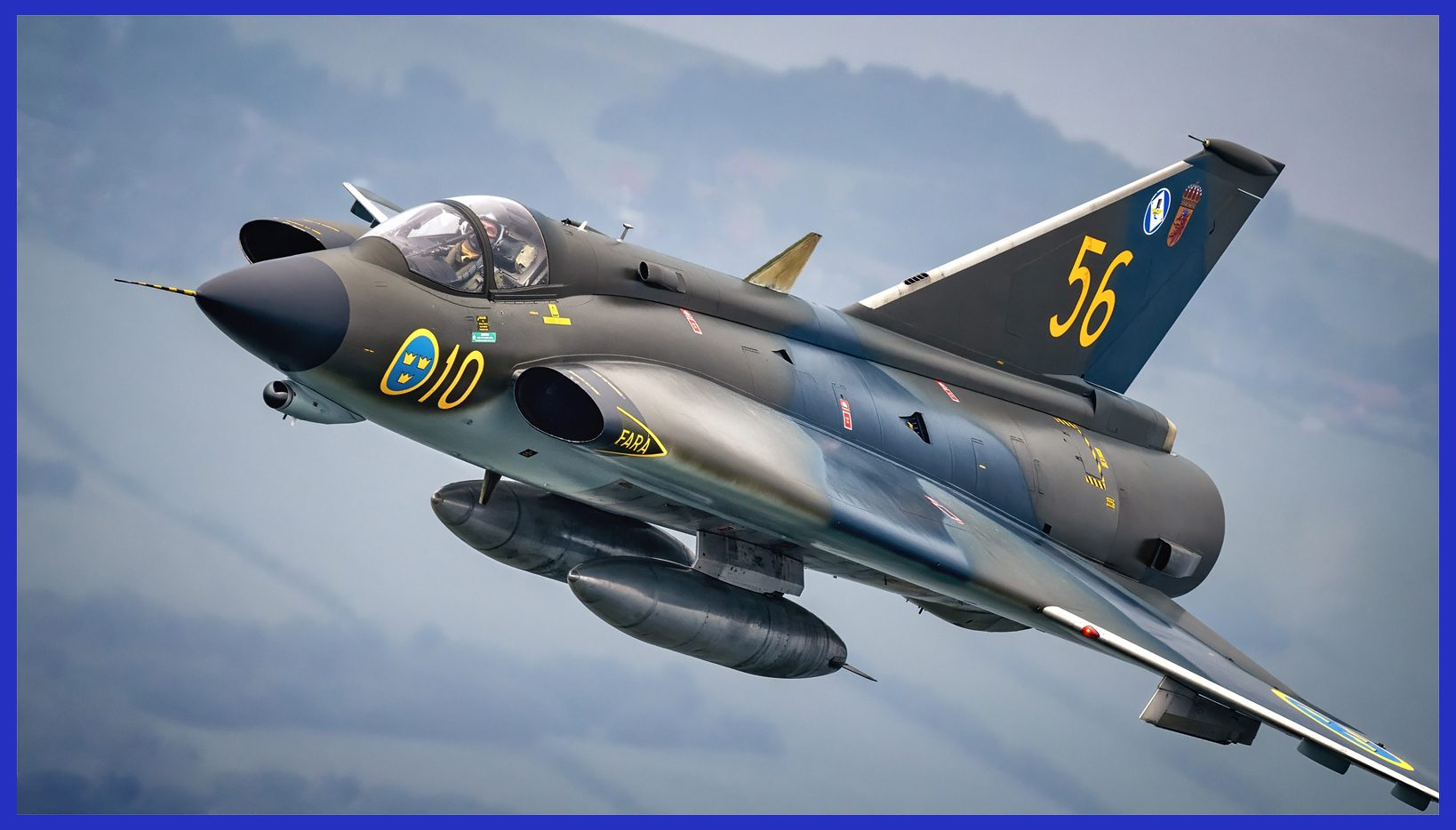
The primary armament was externally mounted, with up to four AIM-9 Sidewinder air-to-air missiles attached to hard points beneath the wings and fuselage. Other available payloads included various bombs and rockets, and the aircraft had provisions for mounting a pair of 30 mm cannons within each of the inboard wing panels. Alternatively, additional fuel tanks could be installed in the same space instead of the cannons. For aerial reconnaissance missions, a range of camera pods could be carried underneath the fuselage.
Throughout the Cold War, the Draken served as a reliable supersonic fighter. The type was thought to be a remarkably skilled dogfighter for its day, despite being built and intended as an interceptor. The J 35J model was the final improvement made to it while it was in Swedish service. Moreover, Draken was exported to the air forces of Finland, Denmark and Austria. Eventually, after serving their purpose, Danish aircraft were transferred to the United States where they were used to educate their test pilots.
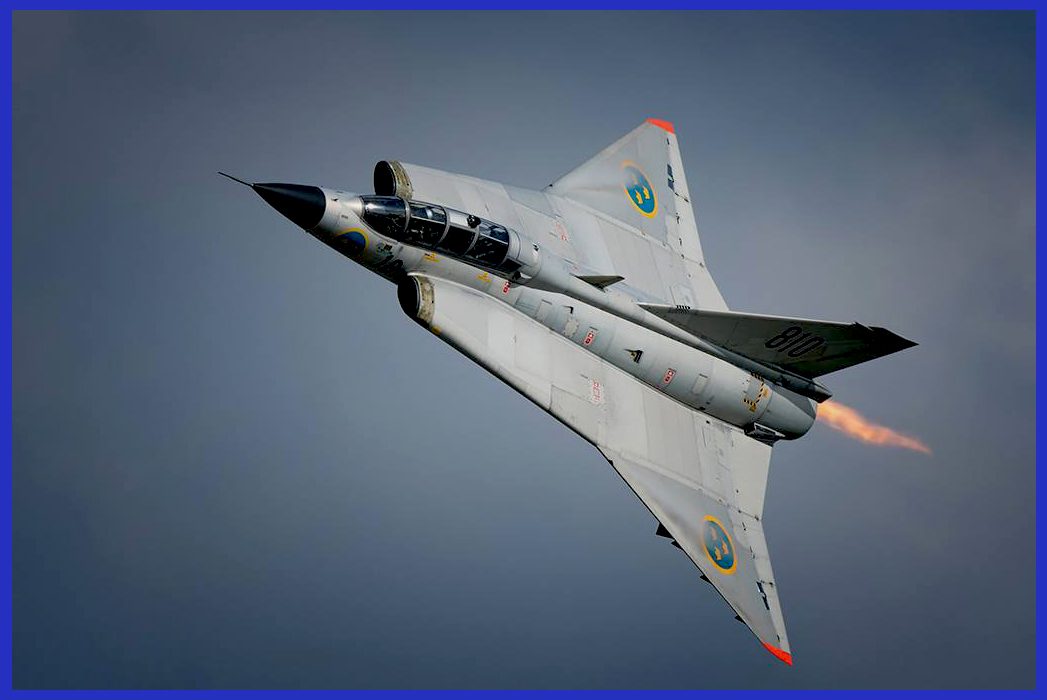
History of Operations of the Saab Draken
The J-35 Draken proved to have good quick-turn capability and high speed at all altitudes, making it a very capable fighter plane even though it was designed as a high-altitude interceptor and not as a dogfighter. The air defence mission was the only purpose of the early variants. To aid pilots in transitioning to this aircraft, Saab manufactured a limited quantity of twin-seat J 35C trainer aircraft, with the initial one being finalized in December 1959.
The Saab company produced 651 Drakens in all. Six distinct Draken models ( Saab 35A, B, C, D, E, F, H & J ) were in total service in Sweden, and two more Draken models were made available to potential export buyers. The J 35F was Draken’s final iteration, and it was also the last one to continue serving Sweden until being upgraded to J 35J specifications.

Indeed, the J 35 Draken design underwent multiple upgrades, culminating in the J 35J version, which was manufactured in the late 1980s. By this time, the Draken had been largely phased out of service in the Swedish Air Force (SAF), being replaced by the Saab 37 Viggen.
Finally, due to budgetary cutbacks and high maintenance costs, Draken was phased out of Swedish service in December 1999. although the aircraft has since remained operational in limited numbers for a few more years. It was last used by the National Test Pilot School (NTPS) of the United States before being discontinued in 2009.
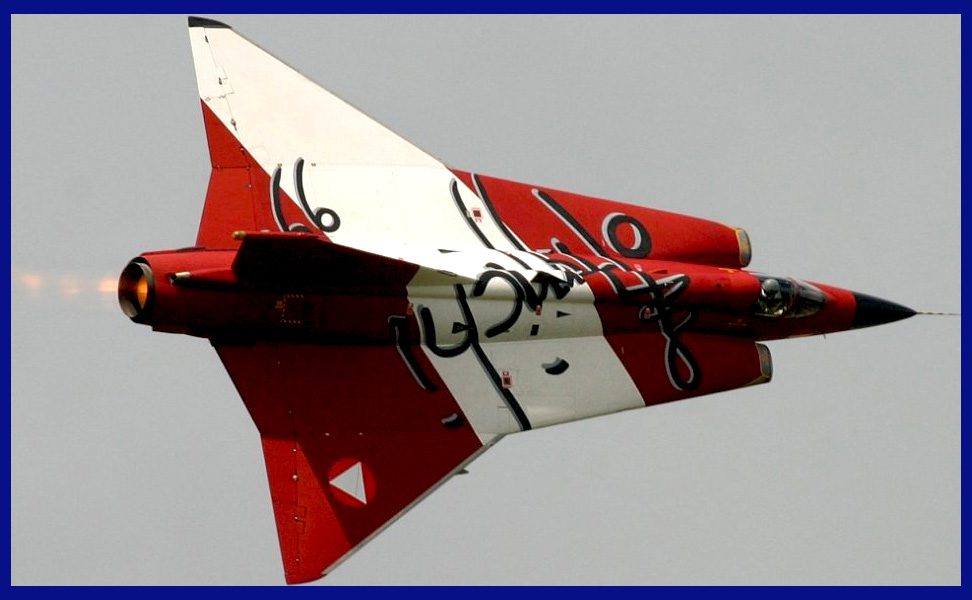
Saab Draken (J 35J) Specifications
- Crew: 1 ( in trainer version 2 )
- Length: 50 ft 4 in ( 15.35 m )
- Height: 12 ft 9 in ( 3.89 m )
- Wingspan: 30 ft 10 in ( 9.40 m )
- Wing area: 529.60 sq ft ( 49.20 m2 )
- Empty Weight: 7,865 kg (17,339 lb)
- Gross weight: 11,000 kg (24,251 lb)
- Max takeoff weight: 12,270 kg ( 27, 050 lb )
- Powerplant: 1 × Svenska Flygmotor RM6C afterburning turbojet engine, 56.5 kN ( 12,700 lb st ) thrust dry, 78.4 kN ( 17,600 lb st ) with afterburner
- Maximum Speed: 2,450 km/h at 36,089 ft ( 11,000 m )
- Mach: 2
- Ferry range: 2,837 km with external drop tanks
- Combat range: 564 km ( on a hi-lo-hi attack mission with internal fuel )
- Service ceiling: 65,600 ft ( 19,995 m )
- Rate of climb: 39,200 ft/min ( 199 m/s )
- Armament: 1× 30 mm ADEN cannon with 100 rounds
- Hardpoints: It featured a total of six hardpoints, with four located under the fuselage and two under each wing, providing a combined capacity of 2,900 kg (6,393 lb). The aircraft had the capability to carry various combinations of AAM (Air-to-Air Missiles), ASM (Air-to-Surface Missiles), bombs, and rockets.

Moreover, don’t miss the golden opportunity to own an exquisite and awe-inspiring scale model of the SR-71A Blackbird, conveniently available exclusively on AirModels. These remarkable and iconic military reconnaissance jets boast an impeccable track record and are now available for purchase with worldwide delivery. Click here now to secure your piece before the limited stock is depleted.
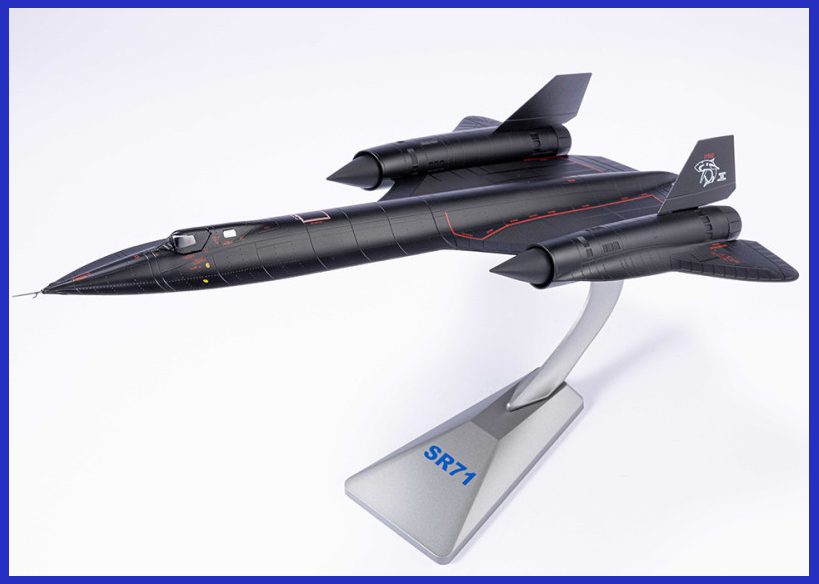
In conclusion, the Saab Draken stands as a testament to Swedish aviation innovation and excellence. With its futuristic double-delta wing design and remarkable performance capabilities, it carved a distinctive niche in the history of fighter aircraft. Throughout the Cold War, it served as a stalwart guardian of Sweden’s skies, embodying the nation’s commitment to self-reliance in defence.
The Draken’s exceptional speed, manoeuvrability, and adaptability, coupled with its potent armament, made it a formidable presence in the air. Its sleek and unique appearance became an enduring symbol of Swedish engineering prowess.
As the Draken J 35J gracefully exited active service in the early 2000s, it left behind a legacy that continues to inspire aviation enthusiasts and historians alike. Its contributions to both Swedish military history and the broader world of fighter aviation are undeniable, reminding us of the era when this remarkable aircraft ruled the skies. The Saab Draken will forever be remembered as a true icon in the realm of military aircraft.

Important Announcement for Our Valued Readers!
After an article is published, it is possible that updates or changes may have occurred beyond the time of publication. Therefore, it is important to be aware that certain information in the article might be outdated. To ensure the most accurate analysis, it is highly recommended to verify the content with the latest sources available.
However, we are dedicated to delivering outstanding articles on military products and global updates. Maintaining quality and smooth operation requires resources. Your support sustains our efforts in providing insightful content. By purchasing high-quality products through our affiliated links, you help us keep our platform alive and acquire top-notch items. Your unwavering support is invaluable and inspires us to strive further.
We welcome your suggestions and requests for more information, as we value feedback from our readers. If there’s specific defence material or equipment not covered on our site, please share your request in the comments. We’ll strive to research and provide the required information. We sincerely thank you for your unwavering interest in our website, and we eagerly anticipate hearing from you! Enjoy your reading experience!
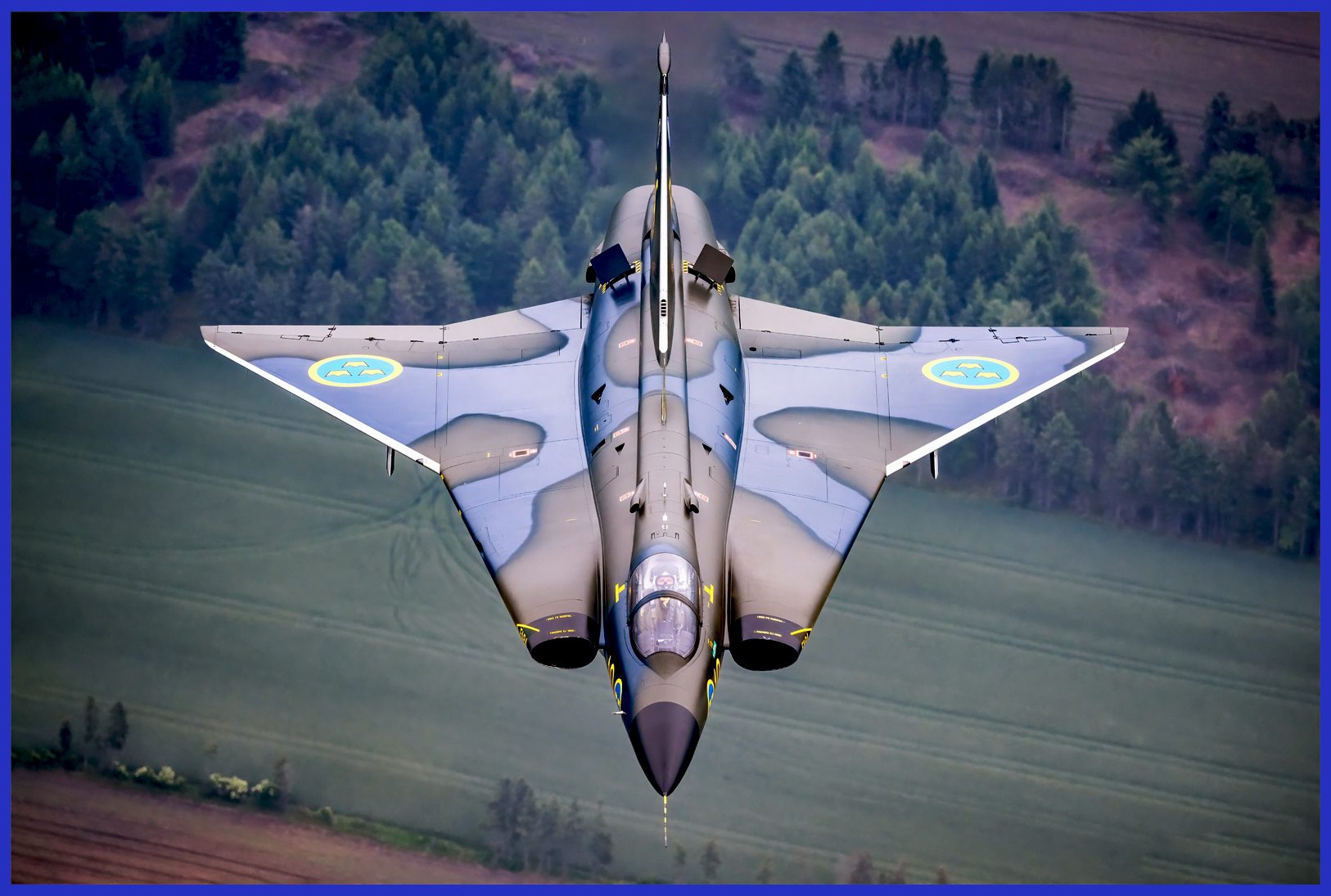
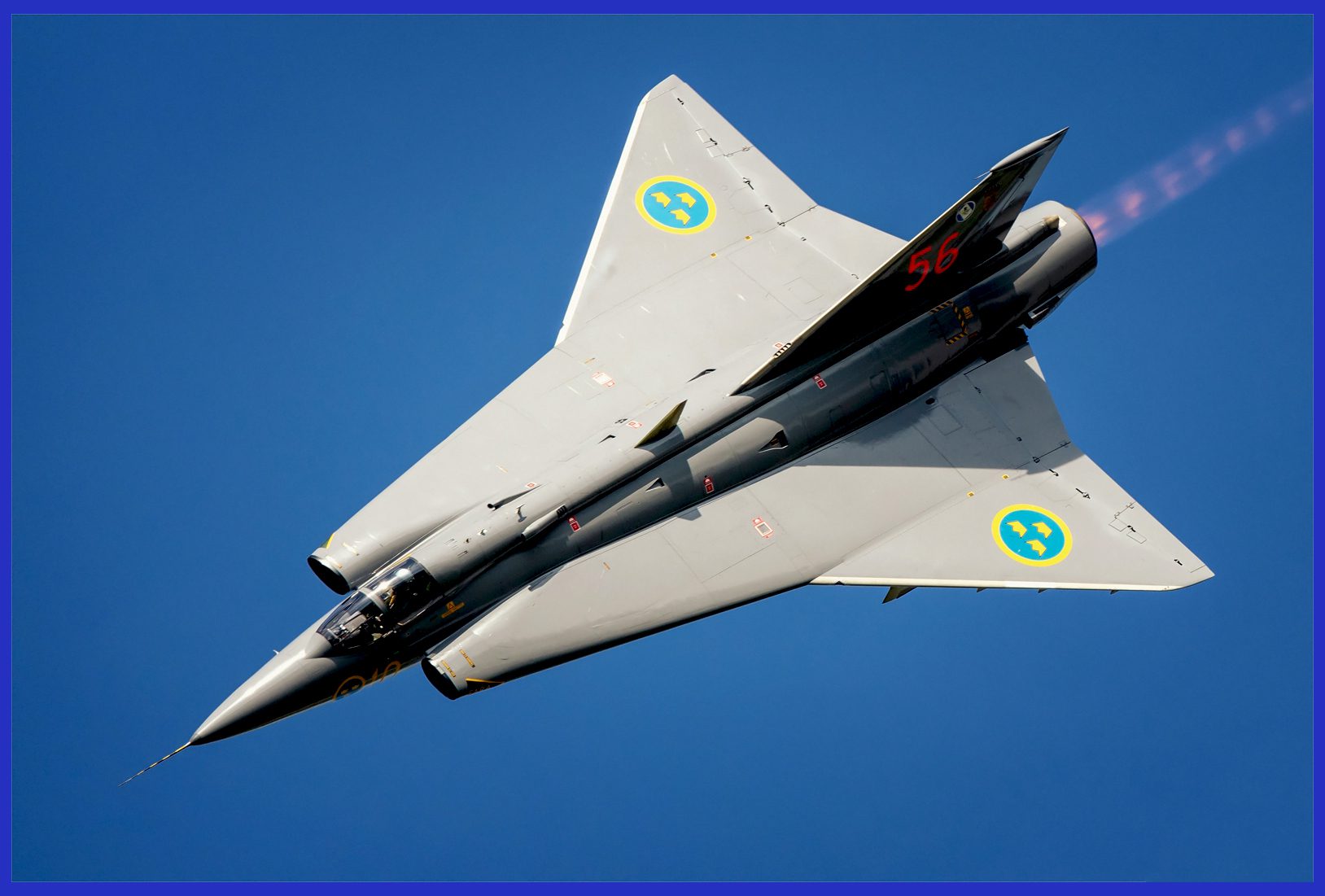
2 thoughts on “Saab 35 Draken”